// 练习:使用二分查找,在一组有序元素中查找数据项
// 形参是数组,实参是数组名
#include <stdio.h>
#include <stdlib.h>
const int N=5;
int binarySearch(int x[], int n, int item); // 函数声明
int main() {
int a[N]={2,7,19,45,66};
int i,index, key;
printf("数组a中的数据:\n");
for(i=0;i<N;i++)
printf("%d ",a[i]);
printf("\n");
printf("输入待查找的数据项: ");
scanf("%d", &key);
// 调用函数binarySearch()在数组a中查找指定数据项item,并返回查找结果给index
// 补足代码①
// ×××
index=binarySearch(a,N,key);
if(index>=0)
printf("%d在数组中,下标为%d\n", key, index);
else
printf("%d不在数组中\n", key);
system("pause");
return 0;
}
//函数功能描述:
//使用二分查找算法在数组x中查找特定值item,数组x大小为n
// 如果找到,返回其下标
// 如果没找到,返回-1
int binarySearch(int x[], int n, int item) {
int low, high, mid;
low = 0;
high = n-1;
while(low <= high) {
mid = (low+high)/2;
if (item == x[mid])
return mid;
else if(item<x[mid])
high = mid - 1;
else
low = mid + 1;
}
return -1;
}
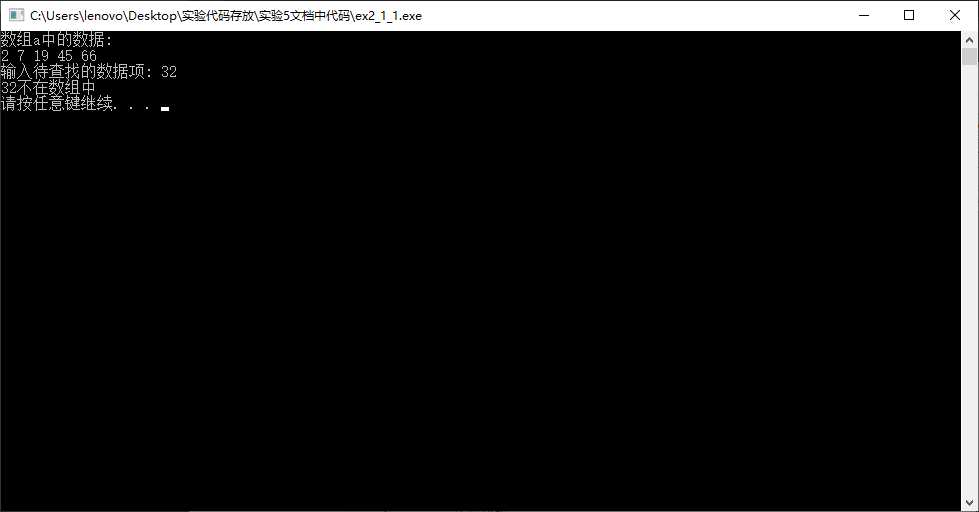
/*
N个字典序的整数已放在一维数组中,给定下列程序中,函数fun的功能是:
利用折半查找算法查找整数m在数组中的位置。
若找到,则返回其下标值;反之,则返回-1
*/
#include <stdio.h>
#include <stdlib.h>
#define N 10
int fun(int *a,int m)
{
int low = 0, high = N-1, mid;
/*************ERROR**************/
while(low = high)
{
mid = (low+high)/2;
/*************ERROR**************/
if(m < *(a+mid))
high = mid-1;
/*************ERROR**************/
else if(m >*(a+mid))
low = mid+1;
else
return(mid);
}
return(-1);
}
int main()
{
int i,a[N]={-3,4,7,9,13,24,67,89,100,180},k,m;
printf("a数组中的数据如下:\n");
for(i=0;i<N;i++)
printf("%d ",a[i]);
printf("\nEnter m: \n");
scanf("%d",&m);
/*************ERROR**************/
k = fun(a,m);
if (k>=0)
printf("m=%d,index=%d\n",m,k);
else
printf("Not be found!\n");
system("pause");
return 0;
}
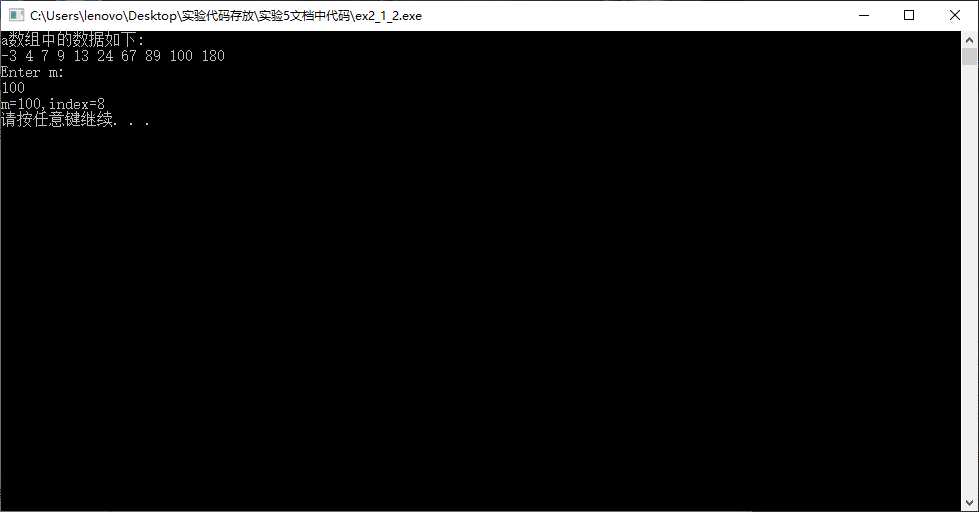
// 示例: 使用选择法排序对一组整数由小到大排序
#include <stdio.h>
#include <stdlib.h>
const int N=5;
void selectSort(int [], int); // 函数声明(函数声明中可以省略变量名、数组名)
void input(int [], int);
void output(int [], int);
int main() {
int a[N];
printf("输入%d个整数\n", N);
input(a, N);
printf("排序前的数据:\n");
output(a,N);
selectSort(a,N); // 调用selectSort()对数组a中的N个元素排序
printf("排序后的数据:\n");
output(a, N);
system("pause");
return 0;
}
// 函数定义
// 函数功能描述:输入n个整数到数组a中
void input(int a[], int n) {
int i;
for(i=0; i<n; i++)
scanf("%d", &a[i]);
}
// 函数定义
// 函数功能描述:输出数组a中的n个整数
void output(int a[], int n) {
int i;
for(i=0; i<n; i++)
printf("%d ", a[i]);
printf("\n");
}
// 函数定义
// 函数功能描述:使用选择法对数组a中的n个整数由小到大排序
void selectSort(int a[], int n) {
int i, j, k, temp;
for(i=0; i<n-1; i++) {
k = i; // k用于记录当前最小元素的下标
for(j=i+1; j<n; j++)
if (a[j] < a[k])
k = j; // 如果a[j]比当前最小元素还要小,就更新k,确保它总是存放最小元素的下标
if(k != i) { // 找到最小元素后,交换a[i]和a[k]
temp = a[i];
a[i] = a[k];
a[k] = temp;
}
}
}
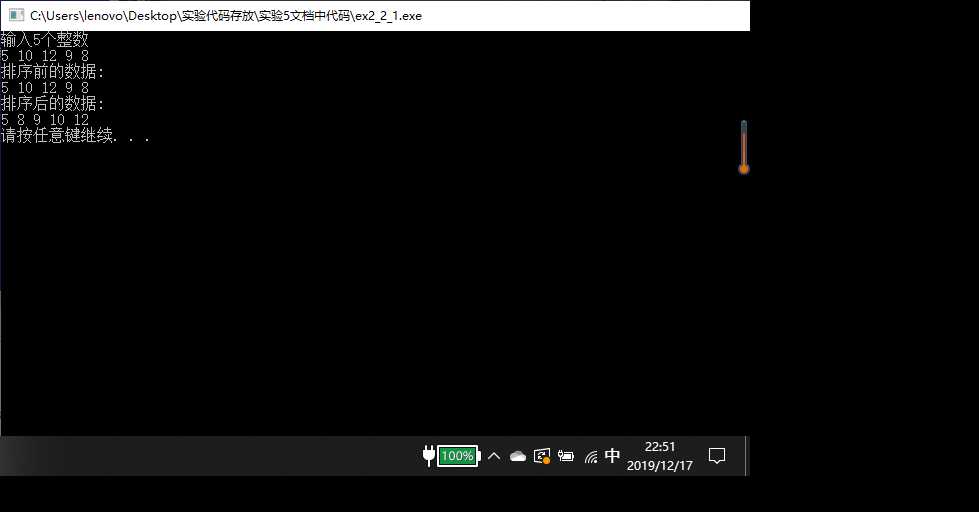
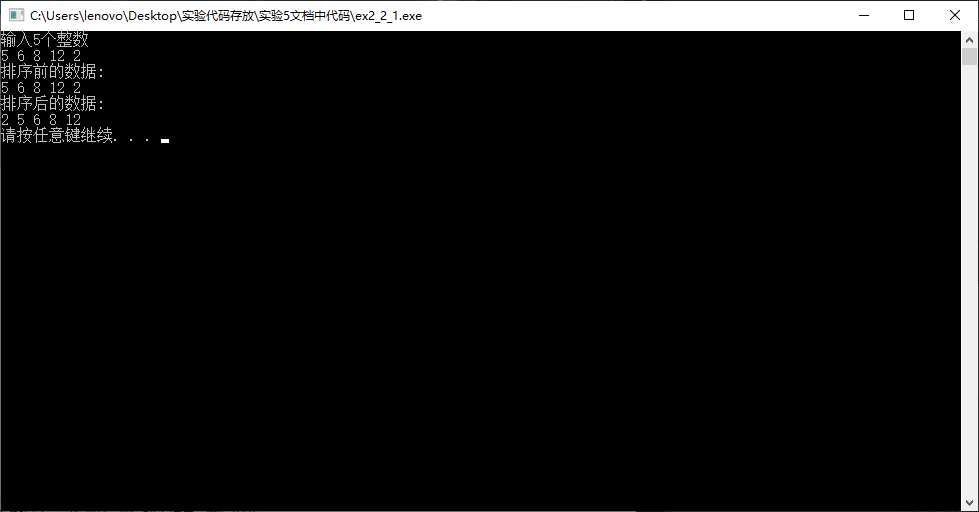
// 练习:使用选择法对字符串按字典序排序
#include <stdio.h>
#include <string.h>
#include <stdlib.h>
void selectSort(char str[][20], int n ); // 函数声明,形参str是二维数组名
int main() {
char name[][20] = {"John", "Alex", "Joseph", "Taylor", "George"};
int i;
printf("输出初始名单:\n");
for(i=0; i<5; i++)
printf("%s\n", name[i]);
selectSort(name, 5); // 调用选择法对name数组中的字符串排序
printf("按字典序输出名单:\n");
for(i=0; i<5; i++)
printf("%s\n", name[i]);
system("pause");
return 0;
}
// 函数定义
// 函数功能描述:使用选择法对二维数组str中的n个字符串按字典序排序
void selectSort(char str[][20], int n) {
// 补足代码
// ×××
int i,j,k;
char temp[20];
for(i=0;i<n;i++)
{
k=i;
for(j=i+1;j<n;j++)
if(strcmp(str[k],str[j])>0)
k=j;
if(k!=i)
{
strcpy(temp,str[i]);
strcpy(str[i],str[k]);
strcpy(str[k],temp);
}
}
return;
}
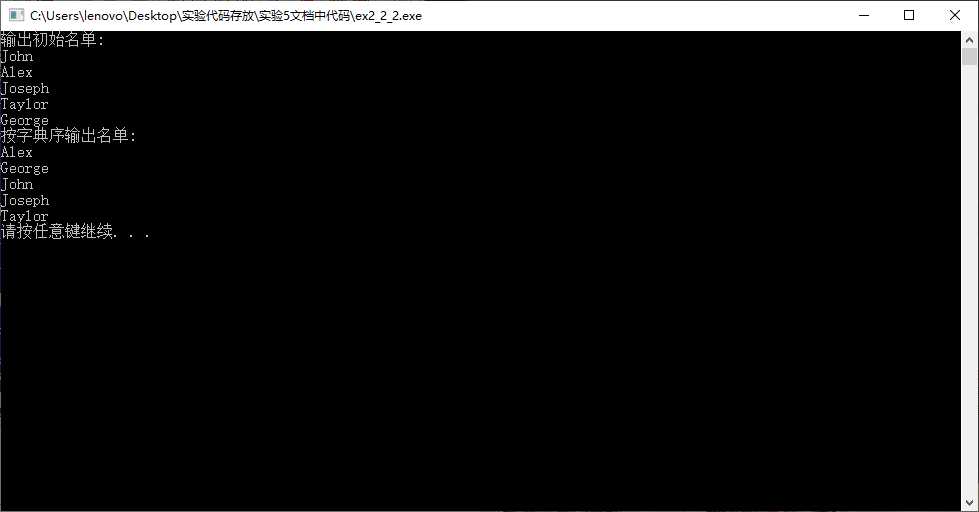
/*
假定输入的字符串中只包含字母和*号。
编写函数,实现:
除了字符串前导的*号之外,将串中其他*号全部删除。
在编写函数时,不得使用C语言提供的字符串函数。
例如,若字符串中的内容为****A*BC*DEF*G*******
删除后,字符串中的内容则应当是****ABCDEFG
*/
#include <string.h>
#include <stdio.h>
#include <stdlib.h>
void fun(char *a) {
/*****ERROR********/
int i=0;
char *p = a;
/****ERROR***/
while(*p && *p == ‘*‘) {
a[i] = *p;
i++;
p++;
}
while(*p) {
/******ERROR*******/
if(*p != ‘*‘) {
a[i] = *p;
i++;
}
p++;
}
/******ERROR*******/
a[i] = ‘p‘;
}
int main() {
char s[81];
printf("Enter a string :\n");
gets(s);
/***ERROR******/
fun(s);
printf("The string after deleted:\n");
puts(s);
system("pause");
return 0;
}
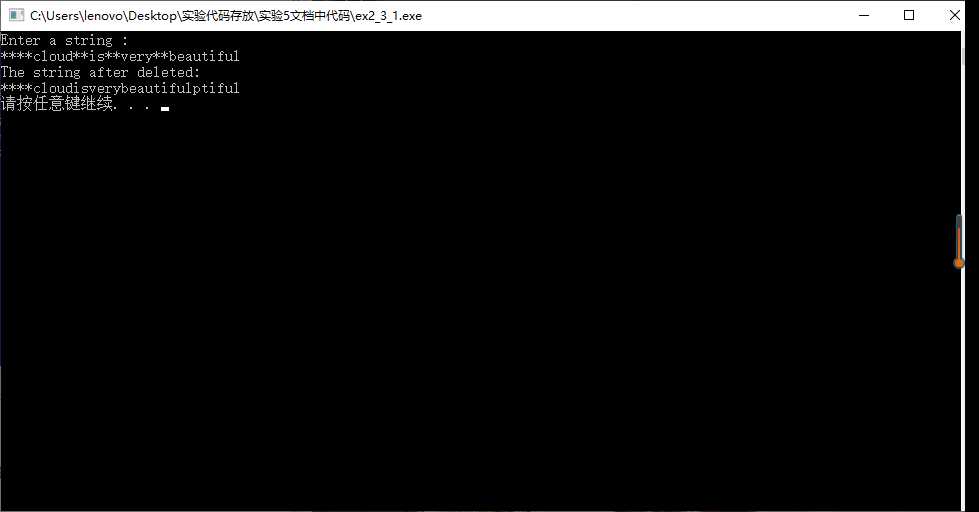
/*
假定输入的字符串中只包含字母和*号。
编写函数,实现:
除了字符串前导和尾部的*号之外,将串中其他*号全部删除。
在编写函数时,不得使用C语言提供的字符串函数。
例如,若字符串中的内容为****A*BC*DEF*G*******
删除后,字符串中的内容则应当是****ABCDEFG******
*/
#include <stdio.h>
#include <stdlib.h>
#include <string.h>
void fun(char *a) {
/**ERROR******/
int i=0;
char *t = a, *f = a;
char *q = a;
while(*t)
t++;
t--;
while(*t == ‘*‘)
t--;
while(*f == ‘*‘)
f++;
/***ERROR***/
while (q<f) {
a[i] = *q;
q++;
i++;
}
while (q<t) {
/***ERROR**/
if(*q != ‘*‘) {
a[i] = *q;
i++;
}
q++;
}
while (*q) {
a[i] = *q;
i++;
q++;
}
/**ERROR**/
a[i]=‘\0‘;
}
int main () {
char s[81];
printf("Entre a string:\n");
gets(s);
/**ERROR**/
fun( s);
printf("The sting after deleted:\n");
puts(s);
system("pause");
return 0;
}
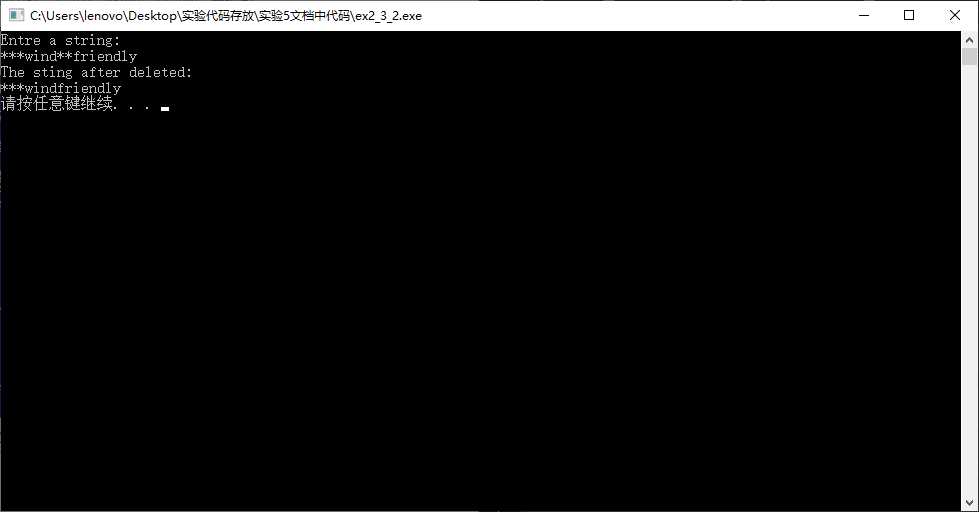
原文:https://www.cnblogs.com/xxy-blogs/p/12057525.html